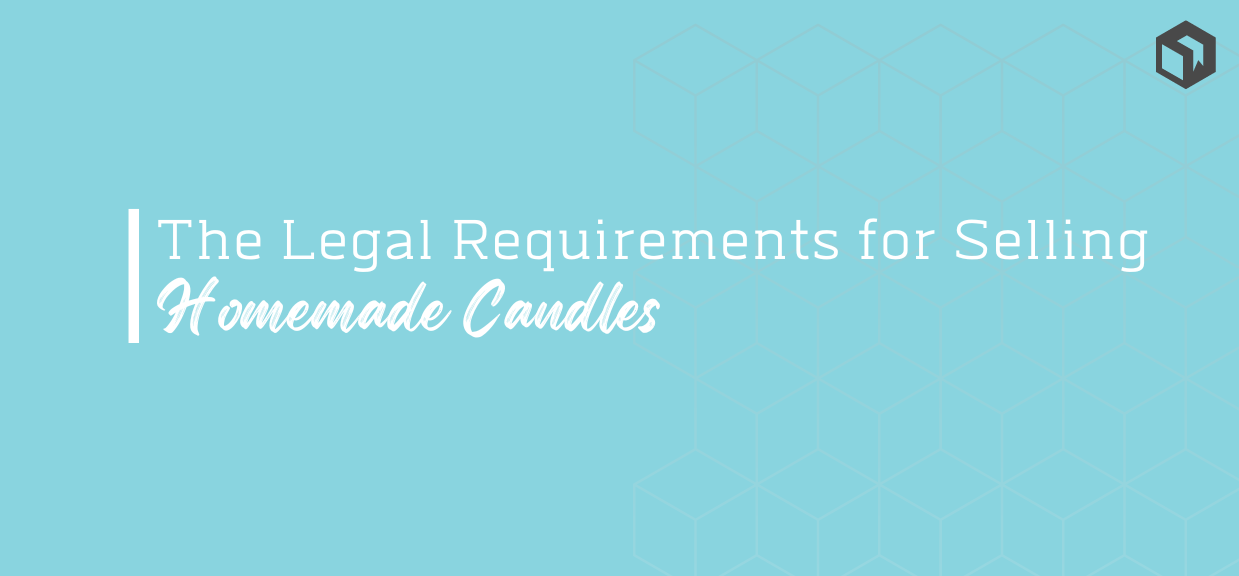Don’t Get Burned! Know the Legal Requirements for Selling Homemade Candles
It's important to be aware of your legal obligations when starting a homemade candle business. We cover requirements from registration to labelling so you can be confident of your responsibilities.

Are you thinking about selling your homemade candles and not sure where to start with understanding the legal requirements involved?
In this blog post, we will discuss the most important things you need to know in order to ensure your candle making business stays compliant with the law.
We will cover topics such as labeling requirements, registration requirements, and restrictions on what ingredients can be used in homemade candles.
Ready to take your candlemaking business to the next level?
Get your inventory organized with our award winning candle inventory software - track raw materials and product stock, COGS and generate pricing guidance to ensure you are making the profits you need.
In this article we will cover:
- General legal requirements (for your US business)
- CPSC / ASTM rules for candlemakers
- FDA requirements for candles
- FTA rules for candle labelling
- What happens if you don’t comply with the requirements?
- Using software to track your candle batches
Without further ado, let’s begin!
General legal requirements (for your US business)

It’s important to be aware that as a business you’ll need to also comply with federal and state authorities and their requirements.
These laws are not unique to candlemaking, however it’s wise to make sure you are compliant with these regulations as a baseline.
Even though there are no licenses specifically for candle businesses, you will likely need to obtain a general business license from your city or county. The requirements for this can vary depending on where you live, so be sure to check with your local government office.
In order to sell your candle products, a state sales tax permit (business tax number or tax ID number) may also be required.
Depending on your city or county regulations, you may need a Certificate of Occupancy (C of O) before you can start selling candles from your home. A C of O is a document that states your business complies with all the zoning regulations in your area.
To get a C of O, you’ll need to submit an application to your local building department and pass a few inspections. The inspections will make sure that your business meets the minimum requirements for health and safety, such as having enough exits in case of a fire.
Now that we have your basic requirements as a business covered, let’s take a look at some of the regulations and legal requirements you’ll need to consider as a candlemaker.
The primary authorities in the US that have some degree of jurisdiction over candlemaking are the CPSC, ASTM, FTA, NCA and the FTC. We’ll take a look at the rules, requirements and recommendations for each now.
CPSC / ASTM rules for candlemakers
The U.S. Consumer Product Safety Commission (CPSC) has specific “voluntary standard activities” in place for candles and candlemakers.
The CPSC has worked for a number of years with the ASTM International Subcommittee F15.45 for Candles and Candle Products to develop a series of requirements to minimize the potential for fires caused by candle products.
They have developed a set of standards for candlemakers that detail labeling, containers, burn test methods, and general fire safety:
- ASTM F-1972-99, Standard Guide for Terminology Relating to Candles and Associated Accessory Items
- ASTM F-2058-00, Standard Specification for Cautionary Labeling for Candles Burned in a Home
- ASTM F-2179-02, Standard Specification for Annealed Soda-Lime-Silicate Glass Containers that are Produced for Use as Candle Containers
- ASTM F-2326-04, Standard Test Method for Collection and Analysis of Visible Emissions from Candles as They Burn
- ASTM F-2179-04, Standard Specification for Fire Safety for Candles
These standards are not freely available and need to be purchased from the ASTM.
FDA requirements for candles
The FDA also has a few requirements for candles, specifically when it comes to the ingredients that can be used in them.
The FDA regulates all drugs and cosmetics, including candles, under the Federal Food, Drug, and Cosmetic Act. This act requires that all ingredients used in a cosmetic product or drug be safe for use by consumers under labeled or customary conditions of use, and that they be properly labeled.
The FDA has not specifically approved any ingredients for use in candles, but they have issued a few guidance documents that outline what ingredients can and cannot be used in them. For example, the FDA does not allow the use of lead in candles, as it can be poisonous if inhaled.
FTA rules for candle labelling

In the United States, candles must be labeled with the following basic information based on the Fair Packaging and Labelling Act:
The name and address of the manufacturer If you are making your candles from home, this would be your name and address.
A list of all ingredients used in the candle This should include all colors and fragrances. Creating a Bill of Materials (BoM) for each of your candles is an excellent idea to make sure that you have this information to hand whenever you make a batch.
The net weight of the candle The net weight is the total weight of the wax and fragrance oil used to make the candle, minus the weight of the container. You can calculate this by weighing and recording the weight of your empty container, then weighing and recording the weight of the finished candle product (when all ingredients have been added).
Related: Free Candle Load Fragrance Calculator
The name of the country This is the country where the final finished candle product is made, not where the raw materials originate from.
ASTM standards for fire warnings on candles

As candles are made of combustible materials, and there is a risk of fire if they are not made correctly it is important to be aware of the implications of using certain materials.
The ASTM standards recommend you should add a safety alert symbol followed immediately by the signal word “WARNING” in uppercase boldface letters in a prominent place on your candle label.
You may also wish to include the following warnings to emphasize candle safety:
- Keep away from things that burn.
- Keep away from things that catch fire.
- Keep away from children.
- Restrictions on Ingredients Used in Homemade Candles
The National Candle Association (NCA) also has developed some guidance around candle labeling for fire safety, and has some handy vector pictogram images you can download to easily add to your labels.
What happens if you don’t comply with the requirements above?
As you can see, there are a few different requirements that you need to be aware of if you want to sell homemade candles - however, it’s wise to note that most of these are to do with the registration of your business as a legal entity rather than your candle products, and they are more guidelines than enforceable regulations.
Understanding your ethical responsibility to your customers is also important, so it’s a good idea to ensure that you try to adhere (as much as is practicable) to the advice around fire safety discussed above.
As long as you take the time to educate yourself on what is required, you can avoid any penalties and continue selling your candles without any problems.
Using software to track your candle batches
Understanding your legal obligations as a candlemaker is only one of the tasks involved in running a successful business. As your candle business grows, you may find it difficult to keep track of all your batches without using software.
Batch tracking software helps you to keep track of every batch of candles that you make, from the ingredients used to the date it was made and shipped. This is important for quality control as well as being able to track any issues with specific batches.
Craftybase is batch tracking software that is specifically designed for candlemaker businesses like yours. With Craftybase, you can track your batches, ingredients, customers and sales all in one place.
What’s more, Craftybase integrates with Etsy and Shopify (+ many others) so you can automatically sync your sales data - meaning less time spent on admin and more time making candles!
If you’re thinking of starting to sell candles, or are already selling them and want to streamline your process, we recommend trying out Craftybase. Click here to start your free 14-day trial.
